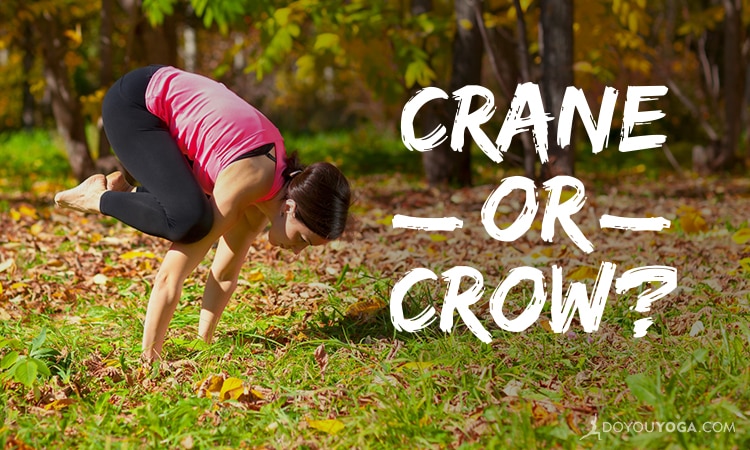If you’ve ever done a Yoga workshop on Arm Balances, you may have been told that Crane and Crow Pose are one and the same, or you may have received different directions for knee and shin placement, and instructed to squat with your feet together or feet hip-width apart, depending on your teacher.
Well, be confused no more! Bakasana – Crane, and Kakasana – Crow, are the same pose execept for elbows: Straight in Crane and bent (as in Chaturanga Dandasana) for Crow. As TribeSports put it,
Both postures – Crane pose and Crow pose – originate from the same origin, the bakasana pose. The simplest way to describe the difference is to label Crane pose as the progression up from Crow.
So what is the difference?
As with many yoga postures, Crane and Crow are frequently confused for one another, especially as different schools of yoga practice often have different names for things. The key difference between the two poses is that Crow pose is performed with bent arms whereas Crane pose is performed with straight arms.
Additionally, crow pose is usually the first step to learning Crane.
Crow pose is easier, as your bent elbows allow you a little more flexibility in regards to your positioning. Crane is much less forgiving, as you hold yourself up with a higher centre of gravity. And now that we’ve got that cleared up, here are some of my tips to help you perform a successful Crane and Crow pose:
1. Wide set fingers
Increase the surface area of your hands and thus create a larger point of contact with the ground. Press knuckles into the mat, lift the centre of your palms up, press into the base of your index fingers. Feel the left and right sides of your wrists on the mat. Feel the space between the middle of your palms and the floor.
2. Look forward
Your head is heavy, so you can easily become unbalanced if you allow your head’s weight to shift towards your hands, which can happen when you look down or in at your hands. To stay balanced look forward, this will keep your head’s weight in a constant position.
3. Place a pillow/blanket in front of yourself
If you are trying Crow pose for the first time, or trying to progress to Crane pose, it is best to place a pillow beneath your head in order to avoid face planting into the floor! It is also a good idea to not have the pillow/soft surface under your hands so that you have a stronger base.
4. Be brave!
The worst thing that can happen is a very short fall! But what you’ll gain from trying, and the whole experience, will be much much more.
There you have it! So now you know the difference between Crane and Crow. I hope this was a helpful guide for those who are just starting their yoga practice and are working their way to performing these poses.



